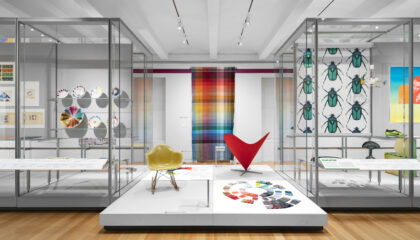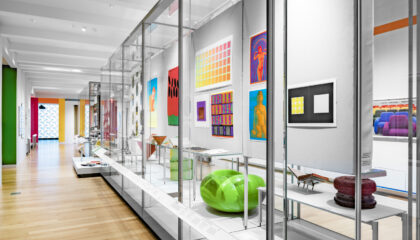Cooper Hewitt Design Museum
Smithsonian Museums
New York, USA
2014
The Cooper Hewitt, Smithsonian Design Museum, the only museum in the United States entirely devoted to design, is housed in the 1902 mock-Georgian home of the industrial magnate and philanthropist Andrew Carnegie on Manhattan’s Fifth Avenue “Museum Mile.” The Carnegie Mansion was converted into a state-of-the-art museum whose exhibition design plays off of the monumentality of the building’s original features.
The display cases
Goppion developed flexible, highly customized, modular display systems, including wall-mounted, freestanding, and table cases that can be easily disassembled and reconfigured as display needs change. Airtight seals ensure that the glass cases meet the high conservation standards such delicate items demand. We framed the larger cases with aluminum rather than the stainless steel used for the smaller cases, reducing their weight and alleviating the burden on the historic building’s floors. Very little hardware is visible; concealing working parts in the thickness of the glass or setting them where the panes meet makes the cases particularly transparent. Visitors have unimpeded sight lines and can easily see details of the works displayed and take in their architectural context.

Freestanding vertical display case opens with a pantograph-operated lifting mechanism with motor-reducer. The metal trestle base contains a passive relative humidity control system with timer-controlled ventilation. Aluminum label holders are attached to the long outside edges of the case.
Image © Andrea Jemolo
Freestanding vertical display case with pull & slide-opening doors on both long sides. Manually operated, miniaturized pantographs set into the thickness of the glass lever out the top of the door (to clear the end glass) synchronously with the larger translation of the bottom of the door that contains and hides the roller slide. A self-centering system ensures correct positioning upon closing
Image © Andrea Jemolo
The exhibition design
Exhibition designers specified that all display cases would need to accommodate temporary exhibitions for at least 10 years and be adaptable enough to be used for the whole range of objects—from fabrics to silverware—in the museum’s collection. They would also need to blend with the variety of period furniture and modern galleries in the mansion, aided by an exhibition design distinguished by a minimalist, straightforward approach.
Diller Scofidio+Renfro
New York
Image © Andrea Jemolo





